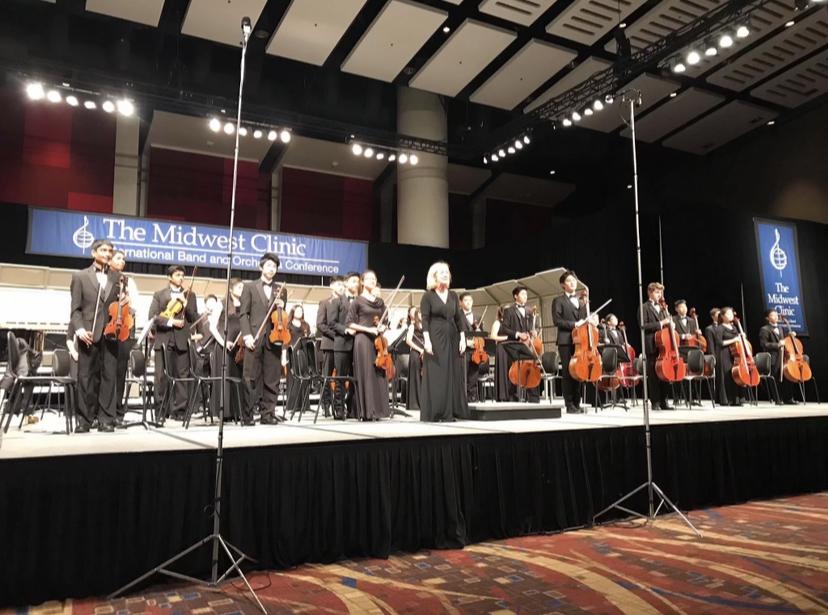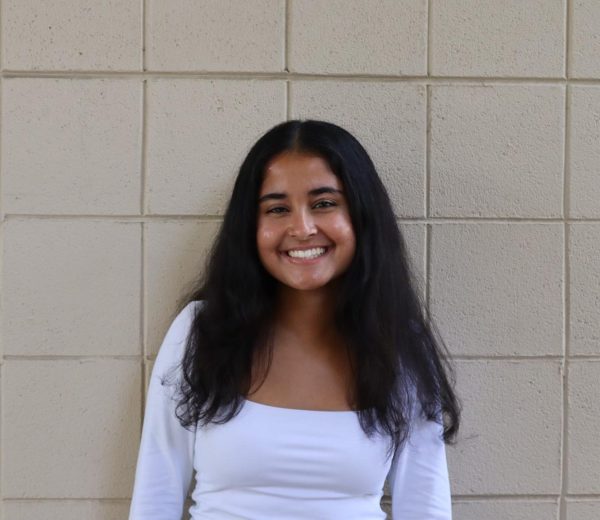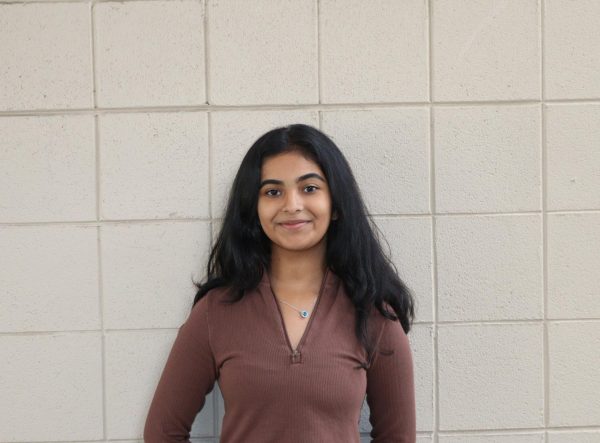Saratoga Strings, the highest audition-level orchestra in the music program, was recently accepted into the 77th Midwest Clinic International Band, Orchestra and Music Conference.
The clinic, which will take place in Chicago from Dec. 20 to 22, welcomes over 18,000 attendees each year and offers a rare chance to connect with musicians, conductors and educators from all 50 states and over 40 countries.
Of the 150 high school string ensemble applicants, only six schools were selected to participate in the prestigious clinic. Saratoga High is one of the few schools given the opportunity to send its 40-member orchestra to the conference three times — in 2014, in 2018 and now in 2023.
Music director Michael Boitz attributed this year’s success to the notable musicality of the group compared to previous years. He specifically credited the senior class who took leadership and initiative during recording sessions.
“Though the upcoming classes are very strong, I think the high level of musicianship, investment [and contribution] from our current seniors really led the way [and pushed us] in terms of how we rehearsed when we recorded parts of the pieces,” Boitz said.
For their auditions, the orchestra recorded two contrasting pieces, Pyotr Ilyich Tchaikovsky’s “Souvenir de Florence” and the first movement of “Holberg Suite” by Edvard Grieg. Since Tchaikovsky was a Russian composer and Grieg was a Norwegian composer, the two pieces differed in musical style — “Souvenir de Florence” is more lyrical while “Holberg Suite” is more playful and dance-like.
One of the primary reasons behind Boitz’s decision to audition with “Holberg Suite” is its notoriously difficult viola solo, which is a part that many professional groups often fail to execute. However, because of the talented viola section led by junior Tejas Tirthapura, sophomore David Kim and senior Ara Esfarjani, Boitz felt confident. As for Tchaikovsky, “Souvenir de Florence” is a well-loved piece that stood out because it is not typically performed by string orchestras.
For the submission, the ensemble held five intense recording sessions at the beginning of March, where pieces were recorded bit by bit, and the best clips were eventually edited together. After each session, Boitz would work with fellow music director Jason Shiuan to determine the orchestra’s best takes and have each student listen to recordings and provide feedback on how the orchestra could improve as a group.
For the orchestra’s December performance at the conference, Boitz commissioned internationally recognized trumpet player, composer and music producer Tony Glausi to write a piece for the string orchestra and jazz combo to perform. (Glausi attended SHS as a freshman before moving with his family to Oregon.)
“We’re including a jazz element to this performance because it is a genre that doesn’t have a lot of repertoires, especially for orchestra students,” Boitz said. “Because jazz music is the only original American art form unique to us, it is important that we [highlight this element] and [perform] more jazz in general.”
In addition to the commissioned piece, the string orchestra will also feature Class of ‘19 alumnus and cellist Thomas Lim as a guest soloist. Lim — who holds a bachelor’s degree in math and computer science from Columbia University — will also be completing his master’s in music next year at Julliard.
With Glausi, who frequently embarks on world tours for quintet performances, and Lim, who has a list of impressive accomplishments as a cellist, Boitz hopes that their unique musical perspectives will help expose students to the different sides of the music spectrum.
During the Midwest Clinic, Saratoga Strings will also be accompanied by Class of ‘19 alumnus Charles Yoon, who, during his time at SHS, was concertmaster in the symphony orchestra. Although Yoon has not continued his musical journey and instead plans to enroll in dental school in the future, Boitz says Yoon’s presence at the clinic serves as a reminder that music can always be a part of students’ lives in different forms, whether they become professional musicians or not.
“All these different artists are meant to inspire students and help them to grow in their own self-confidence, [while also] exposing students to newer music and [foundational] repertoire at the same time,” Boitz said.





























